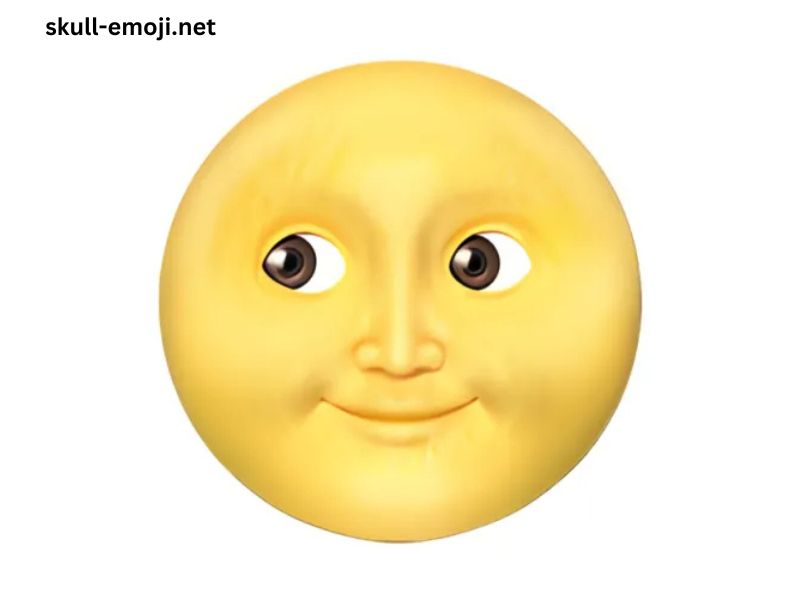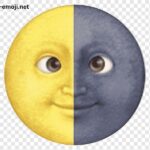In our digitally-driven world, emojis have become a universal language, bridging gaps in communication across cultures and languages. One of the more intriguing and versatile emojis is the moon phase emoji, which allows users to express emotions, ideas, and concepts linked to the lunar cycle. This article delves into the significance of the current phase of the moon emoji, its meanings, applications, and its impact on social media and digital communication.
The Moon’s Phases: A Brief Overview
Before exploring the moon phase emoji, it’s essential to understand the lunar cycle itself. The moon goes through eight distinct phases during its roughly 29.5-day cycle, from the New Moon (🌑) to the Full Moon (🌕) and back again. Each phase represents a different position of the moon in relation to the Earth and the Sun:
- New Moon (🌑): The moon is not visible as it is located between the Earth and the Sun. This phase signifies new beginnings and potential.
- Waxing Crescent (🌒): A sliver of the moon becomes visible, symbolizing growth and intentions being set.
- First Quarter (🌓): Half of the moon is illuminated, representing decision-making and taking action.
- Waxing Gibbous (🌔): More than half of the moon is lit, indicating progress and refinement of goals.
- Full Moon (🌕): The entire face of the moon is visible, often associated with completion, fulfillment, and heightened emotions.
- Waning Gibbous (🌖): The moon starts to wane, signifying reflection and gratitude.
- Last Quarter (🌗): Again, half of the moon is illuminated but now in the opposite direction, symbolizing release and letting go.
- Waning Crescent (🌘): The moon shrinks back to a sliver, representing rest and preparation for a new cycle.
The Current Phase of the Moon Emoji
The current phase of the moon emoji varies depending on the time of the month. Platforms like Twitter, Instagram, and Facebook often feature the moon phase emoji to indicate current events, moods, or personal reflections. Here’s how each phase can be represented and interpreted in digital communication.
Symbolism and Meanings
- New Moon (🌑): Often used to convey a sense of renewal or a fresh start. It’s popular among those who practice goal-setting or journaling, signaling a time to set intentions for the month ahead.
- Waxing Crescent (🌒): This emoji is used to express hope and the excitement of new ventures. It’s often paired with phrases like “Let’s grow!” or “New beginnings are here!”
- First Quarter (🌓): Represents determination and taking action. Users might employ this emoji during significant decision-making moments, such as embarking on a new project or relationship.
- Waxing Gibbous (🌔): This emoji is perfect for sharing progress updates. It conveys a sense of achievement and the excitement of nearing completion.
- Full Moon (🌕): The full moon is associated with powerful emotions, celebrations, and culminations. Many people use this emoji during significant life events or when sharing moments of joy and fulfillment.
- Waning Gibbous (🌖): This phase symbolizes reflection and gratitude. It’s often used in posts about winding down after achieving goals or during moments of introspection.
- Last Quarter (🌗): Represents release and letting go, making it ideal for sharing moments of closure or personal growth. Users might share experiences of overcoming challenges.
- Waning Crescent (🌘): This emoji is used to convey rest and preparation for new beginnings. It’s commonly associated with self-care and the importance of taking a break.
Cultural and Social Significance
The moon has held cultural significance throughout human history, inspiring myths, art, and literature. Various cultures view the moon as a symbol of femininity, intuition, and the cyclical nature of life. In contemporary society, the moon phase emoji can convey these deeper meanings and emotions succinctly.
Astrology and the Moon
Astrology enthusiasts often use moon phase emojis to reflect on their emotional states and life events. For many, the moon is tied to personal horoscopes and plays a significant role in their astrological profiles.
- New Moon Rituals: Many practitioners believe that the New Moon is an ideal time to set intentions and manifest desires. They might share their plans on social media, accompanied by the new moon emoji.
- Full Moon Celebrations: Full moons are often celebrated with gatherings, rituals, and ceremonies. People might share photos of their celebrations, along with the full moon emoji, to indicate a time of heightened energy.
Social Media Trends
The rise of social media has led to the evolution of how we communicate. Emojis, including the moon phase emojis, serve as a visual shorthand to express complex feelings and ideas.
- Mood Indicators: Users frequently turn to moon phase emojis to indicate their moods. A waxing gibbous might signal excitement about a personal project, while a waning crescent could indicate a need for rest.
- Event Promotion: Event planners and social media influencers often use moon phase emojis to promote events aligned with lunar phases, such as full moon gatherings or new moon intention-setting workshops.
- Mental Health Awareness: The cyclical nature of the moon is often paralleled with mental health journeys. Many individuals use moon phase emojis to express their emotional states and advocate for mental wellness.
Artistic and Creative Expressions
The moon has inspired countless artists and creators, and the moon phase emojis provide a modern twist on this age-old inspiration.
Graphic Design and Merchandise
Designers often incorporate moon phase emojis into their work, from T-shirts to posters. The simplicity and beauty of the moon phases resonate with those drawn to minimalistic design.
Writing and Literature
Writers frequently use moon phase emojis in poetry and prose to evoke emotions associated with different lunar phases. The imagery of the moon serves as a powerful metaphor for change, growth, and the passage of time.
Music and Performance
Musicians and performers sometimes incorporate lunar themes into their work. Moon phase emojis can be used in promotional materials or social media posts to create a connection between their art and the emotions evoked by the moon.
Conclusion
The current phase of the moon emoji serves as a captivating symbol of human experience, encapsulating feelings of hope, reflection, and growth. As digital communication continues to evolve, the use of these emojis allows us to express complex emotions in a succinct and visually appealing way.
Whether you’re setting intentions during a New Moon, celebrating during a Full Moon, or simply reflecting during a waning phase, the moon phase emojis can enhance our digital interactions and deepen our connections with others. As we continue to explore the moon’s influence on our lives and its representation in the digital world, these emojis remind us of the beauty and complexity of our emotions, the cycles of life, and the shared human experience.
In the age of rapid communication, the moon phase emoji is not just a digital symbol; it’s a powerful reminder of our interconnectedness and the shared rhythms of life. So, the next time you send a moon phase emoji, remember the depth of meaning it carries and the universal language it helps us speak. 🌑🌒🌓🌔🌕🌖🌗🌘



